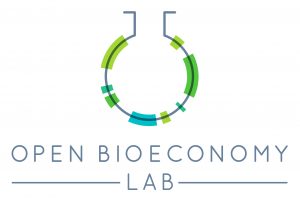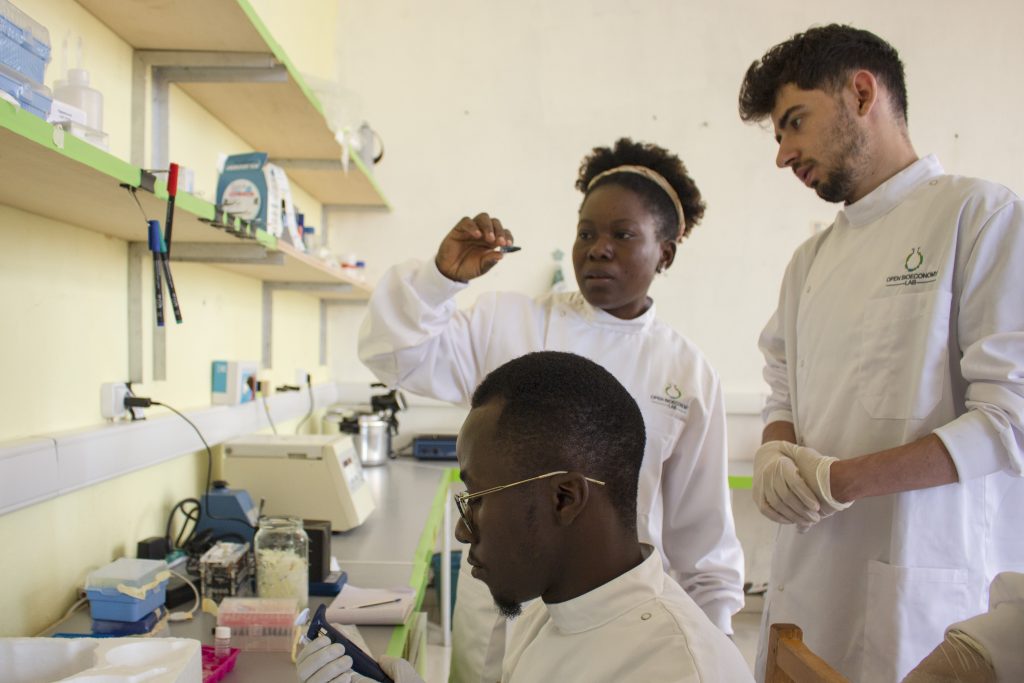Dr Jenny Molloy was interviewed by the World Economic Forum Strategic Intelligence Unit about the future of the global bioeconomy and specifically a question that drives our research at the Open Bioeconomy Lab: How can technological advancements in synthetic biology benefit everyone?
The full piece can be found here and the interview section is below.
What drew you to explore and work in synthetic biology?
Originally, I worked on advocacy for open data and open science (which fortunately is now much more mainstream within research culture), and then my introduction specifically to bioeconomy policies came when I worked on genetic modification of dengue mosquitoes for my doctorate. This put me right at the intersection of global health, synthetic biology, and the bioeconomy in a field nested in a complex tangle of ethics, regulation, responsible innovation, and public opinion.
At the same time, I was contributing to projects on open science for development and getting more interested in how to make access to science, innovation, and its benefits truly global. Everything started pointing to the imperative of working to ensure that we collectively build a global bioeconomy that is equitable and economically and environmentally sustainable.
What is the most exciting new development in synthetic biology? What global challenge does this address?
I’d say the ability to de novo synthesise DNA at scale and precisely edit it. When I was trying to genetically engineer mosquitoes, constructing DNA modules was laborious and it was really a roll of the dice as to where in the genome that DNA would end up. Having more affordable ways to write as well as read DNA with increased elegance, precision editing of CRISPR has enabled exciting advances to address so many global challenges: from drug discovery to crop improvement.
That is why I find enabling tools and technologies so exciting: they underpin innovation and users will deliver applications that the original developers didn’t dream about. A lot of my work focuses on how to ensure that these developments reach all scientists and not only those in high income countries.0 seconds of 44 minutes, 22 secondsVolume 90%
What is most misunderstood about synthetic biology? What do you wish people knew?
I would say the perception and narrative that is strongly embedded in biotechnology at all levels that “open source” means “uncommercialisable”.
Unfortunately, this leads to an unwillingness to creatively explore openness as one possibility within a whole range of Intellectual Property (IP) strategies. I wish people knew to ask, “What impact do I want to achieve in the world and to what extent can protecting or openly sharing this technology get me there?”. Sometimes, you’ll land back on patenting everything because the promise of a monopoly is required to unlock sufficiently risk tolerant investment. That is OK!
However, the answer is likely more nuanced when your goal is also environmental or social impact or where you have a user community that could contribute back significant innovations or for many other reasons. Tesla’s patent pledge in 2014 was likely partially because their success depends on public and private investment in infrastructure like charging stations, so while sharing their technology might allow competitors to get to market faster, that could increase the number of electric cars on the road and the interests of electric car drivers and industry. All this nuance gets missed if you don’t ask the question.
How do you see “open source” approaches to biotechnology and intellectual property play a role in supporting developing countries build capacity and innovation in synthetic biology?
One of the best sources of knowledge in biotechnology is, perhaps somewhat ironically, published patents! Developing and emerging economies have immense freedom to apply this knowledge commercially as very few biotech patents have been filed in the Global South while many more have expired and entered the public domain.
However, there are major challenges to making that knowledge used and useful, including having enough people “skilled in the art” and providing an enabling environment – well equipped labs, reliable supply chains, responsive regulation and funding. Open source approaches play an important role here because beyond open licensing they also encourage collaborative development and sharing of know how, which is essential to overcome barriers to building capacity and innovation.
Would you have any examples of scenarios where this has had a direct impact on scientific progress?
For example, basic laboratory equipment like incubators are typically no longer protected by IP but you will rarely find full assembly and repair instructions online: open hardware projects provide this and bring together communities of developers and manufacturers to enable local manufacturing. Access to enzymes is an almost ubiquitous challenge in the Global South and while many useful enzymes are now in the public domain, it can be time consuming to find the DNA and protocols to express them.
Open toolkits like the Research in Diagnostics DNA Collection designed by my lab and many collaborators and distributed through the Free Genes project at Stanford provides a “ready to go” solution that with the correct manufacturing practices, quality management systems and regulatory approvals could also be used for diagnostics kits. Local manufacturing of molecular diagnostics is a possibility we are exploring with collaborators in Cameroon and Ghana, for example through the AfriDx project funded by EDCTP.
A great example of an open project that has already had a direct impact on scientific progress is the Structural Genomics Consortium, a public-private-partnership which has openly released data, materials and research tools for drug discovery against medically relevant human protein structures to academia and industry for around 20 years, resulting in thousands of collaborations and scientific papers and over 1500 protein structures entering the public domain. The leaders of the consortium continue to push the model further, for example launching pharma companies that aim to apply an open approach to drug discovery for rare childhood cancers.
What would be your ideal scenario for the global bioeconomy policy agenda for the next 10 years?
Realizing that the current system of how we fund, reward, publish and disseminate science and how we balance public and private interests in technology is quite recent and could be changed.
My ideal scenario is that the global bioeconomy policy agenda is truly global, so that over the next 10 years countries in the Global South, that host so much of the biodiversity that is fuelling the bioeconomy, are able to shape that agenda, to level up innovation capacities, and to benefit from the bioeconomy on their own terms.
My advice to global leaders and policymakers is to ensure that all countries get a seat at the table and focus on building out more than local or regional policies but also systems for international governance that can adapt to the extraordinary pace of technical and social change in the bioeconomy.
The Global Future Council on Synthetic Biology has focused a lot of our attention on how to embed the values of sustainability, equity, humility and solidarity into the future bioeconomy policy agenda, providing a compass rather than a map, because we think this is important to ensure that synthetic biology is being harnessed to create a world in which we want to live.


